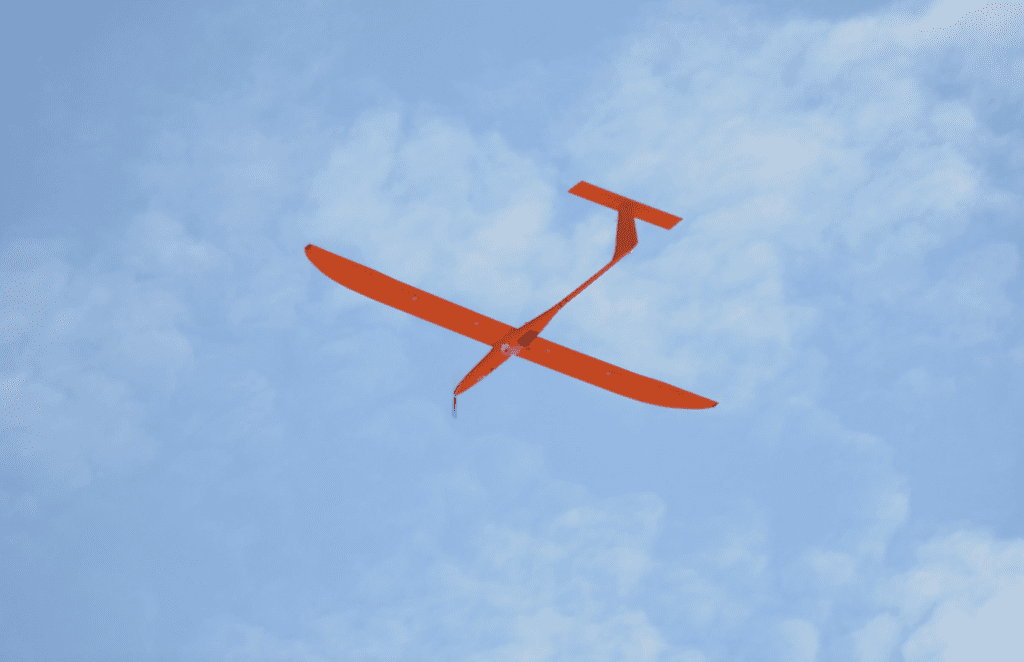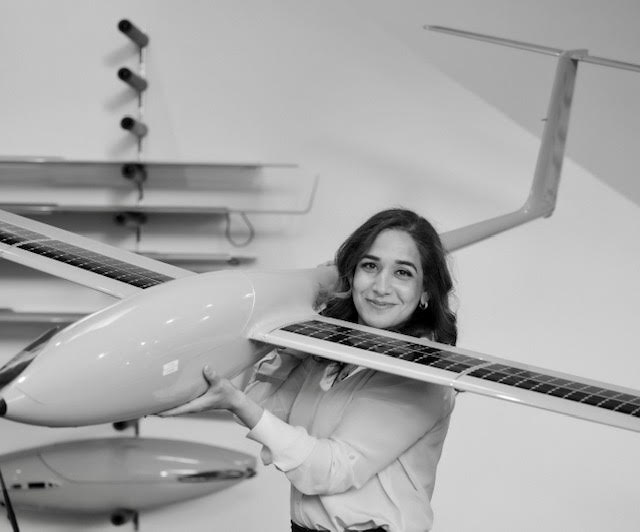Kraus Hamdani Aerospace CEO Talks Long-Endurance Drones and Enhanced Communication Networks


Pictured above is the ultra-long-endurance drone designed by Kraus Hamdani Aerospace, the K1000ULE. “We’ve already flown the sub-scale version of what we want to fly at higher altitudes within the next 24 months,” CEO Fatema Hamdani stated. (Photo: Kraus Hamdani Aerospace)
Aerospace technology company Kraus Hamdani Aerospace, Inc. recently completed end-to-end vertical take-off and landing tests of their unmanned aerial system, the K1000ULE (Ultra Long Endurance). The fixed-wing drone is fully electric and is capable of longer flight times than any electric aircraft in its size and weight category available today. CEO and co-founder Fatema Hamdani offered in-depth details on the functionality and various applications of the K1000ULE in an interview with Avionics International.
When first starting the company, Fatema Hamdani and co-founder Stefan Kraus saw four key areas that needed to be improved upon in the unmanned aerial vehicle (UAV) industry, including; the distance that UAVs can travel from the operator, maximum flight duration, ease of integration and operational footprint.
“We realized that [drone] innovation had stagnated,” remarked Hamdani, “especially for the larger fixed-wing aircraft.” She described that there were small, incremental changes, but nothing groundbreaking or exponential. Kraus Hamdani Aerospace’s goal was to take an entirely new, open-architecture approach to designing a UAV, integrating concepts from nature in the development of the platform’s onboard AI, its specialized autopilot technology, and energy management systems. Other players in this space, Hamdani said, are integrators of technology. “They have brought in fairly closed technology, and innovation becomes very hard.” In comparison, their team “sits on the entire stack from the hardware through to the software,” from the customization of the motor to the avionics. “Using our open-source approach to software development, when introducing new functionality we can get tens of thousands of users testing it over a weekend. When one of the larger integrators tries to get something introduced, they are barely able to get a hundred hours of testing before moving to production because it’s so closed.”
The K1000ULE has already been flown more than 20,000 feet above sea level. Hamdani added, “A lot of components we’ve already built can extend and scale up as we are growing in size, weight, and power as well as altitude, eventually [going up to] 65,000–85,000 feet above ground level.” The drone has also demonstrated a 26-hour-long non-stop flight, and according to Hamdani, it could fly up to 340 hours depending on the latitude. She noted that it’s not always necessary to have a vehicle capable of operating at the high altitudes mentioned. Instead, the focus has been on long endurance at a variety of altitudes in order to perform different functionalities. These functionalities range from firefighting and disaster management to national security applications. The K1000ULE took part in Project Convergence 21 exercise, providing aerial network coverage for hours during testing of autonomous capabilities that could eventually be integrated into the U.S. Army’s next-generation platforms. “We became the primary network,” Hamdani said. “Because when we were flying, everybody else was connected and could talk to each other across different wave forms because of the radio bridge we have built on our asset.”

Stefan Kraus co-founded the drone company with CEO Fatema Hamdani, pictured above with the K1000ULE. (Kraus Hamdani Aerospace)
Kraus Hamdani Aerospace was awarded an SBIR Phase II contract in 2021 that will be completed in August 2022. The contract’s focus is mission-centric swarming, and the team is contributing enhanced communication across multiple aircraft as well as providing an array of aerial services. “The ability to have smart, fully coordinated airborne assets that are flying and optimizing based on the mission profile, fully autonomously…it changes the game, especially when those aircraft can safely and autonomously deconflict with terrain and other aircraft in the National Air Space” Fatema Hamdani said. Their drones have the AI built- in to coordinate and reconfigure their formation if one is removed.
The technology that the company has developed has the potential to drastically change approaches to disaster management. For example, first responders might carry up to five pieces of equipment for communications; introducing long-endurance drones that could handle communications would help to lighten their load. The K1000ULE also monitors environmental conditions during a wildfire or other disasters and provides critical data to put out fires more quickly or to move people away from danger. In the wake of a disaster, UAVs like these can help in efforts to rebuild by assessing damage in order to receive appropriate funding to replace damaged infrastructure as well as monitoring the recovery process. “We want to be the connective tissue between sea, land, air, and space. We want to enable these assets; we’re making all of us more efficient,” Hamdani explained. “Think of us as satellites that don’t need to be in space; lowering the risk of adding to more potential space-junk.”
The drone developed by Kraus Hamdani Aerospace boasts a small operational footprint, only requiring three people to ensure its operation for a 24-hour period. Another key aspect of their approach is an understanding of low air density and how to fly in it. “Those are the kinds of environments we will be faced with at 65,000 to 85,000 feet above ground level, where air density is very low,” said Hamdani. “We’ve already flown the sub-scale version of what we want to fly at higher altitudes within the next 24 months. We are the only 100% U.S. industrial-based platform with our capabilities.”
The post Kraus Hamdani Aerospace CEO Talks Long-Endurance Drones and Enhanced Communication Networks appeared first on Aviation Today.
—————
Boost Internet Speed–
Free Business Hosting–
Free Email Account–
Dropcatch–
Free Secure Email–
Secure Email–
Cheap VOIP Calls–
Free Hosting–
Boost Inflight Wifi–
Premium Domains–
Free Domains





